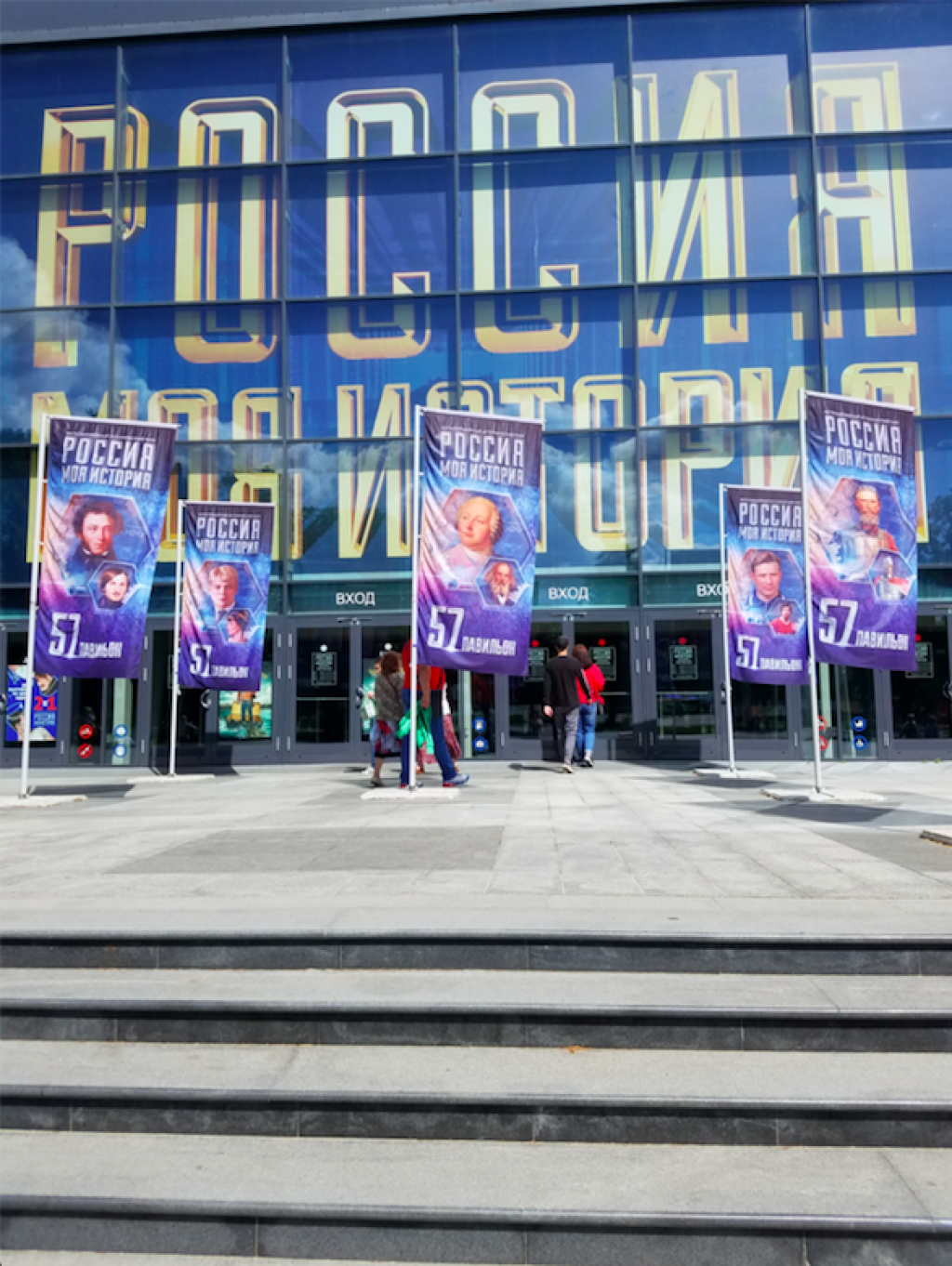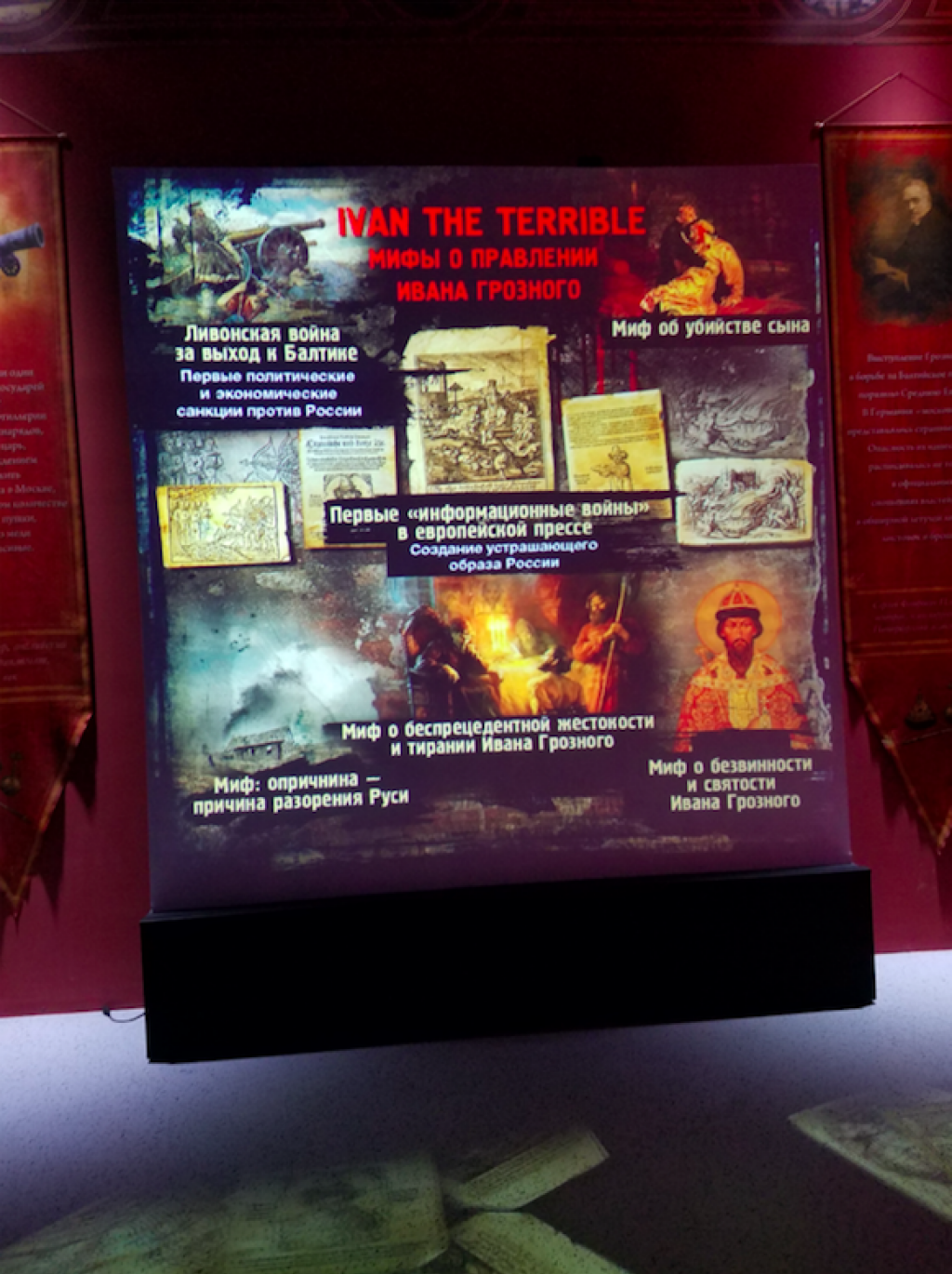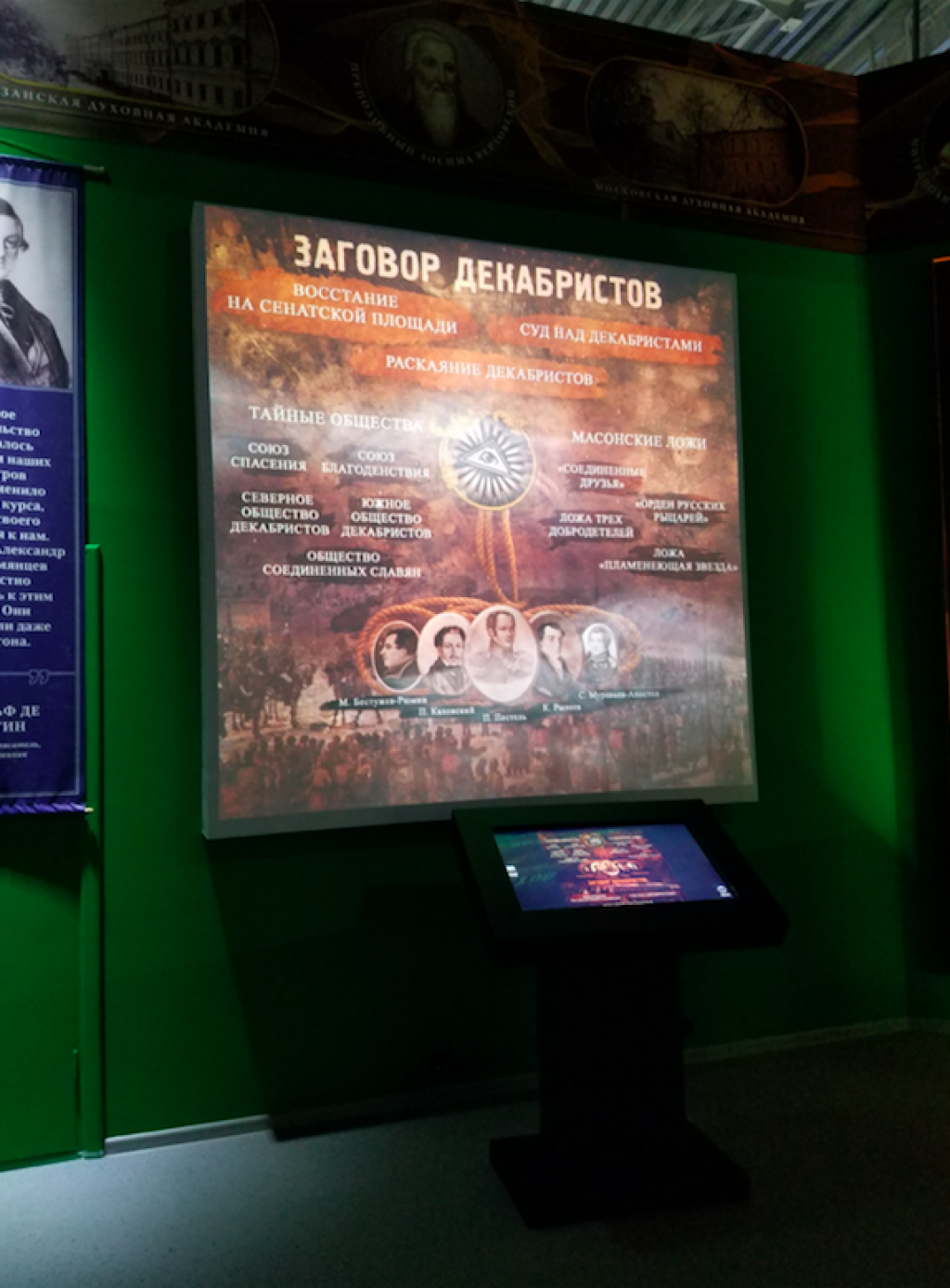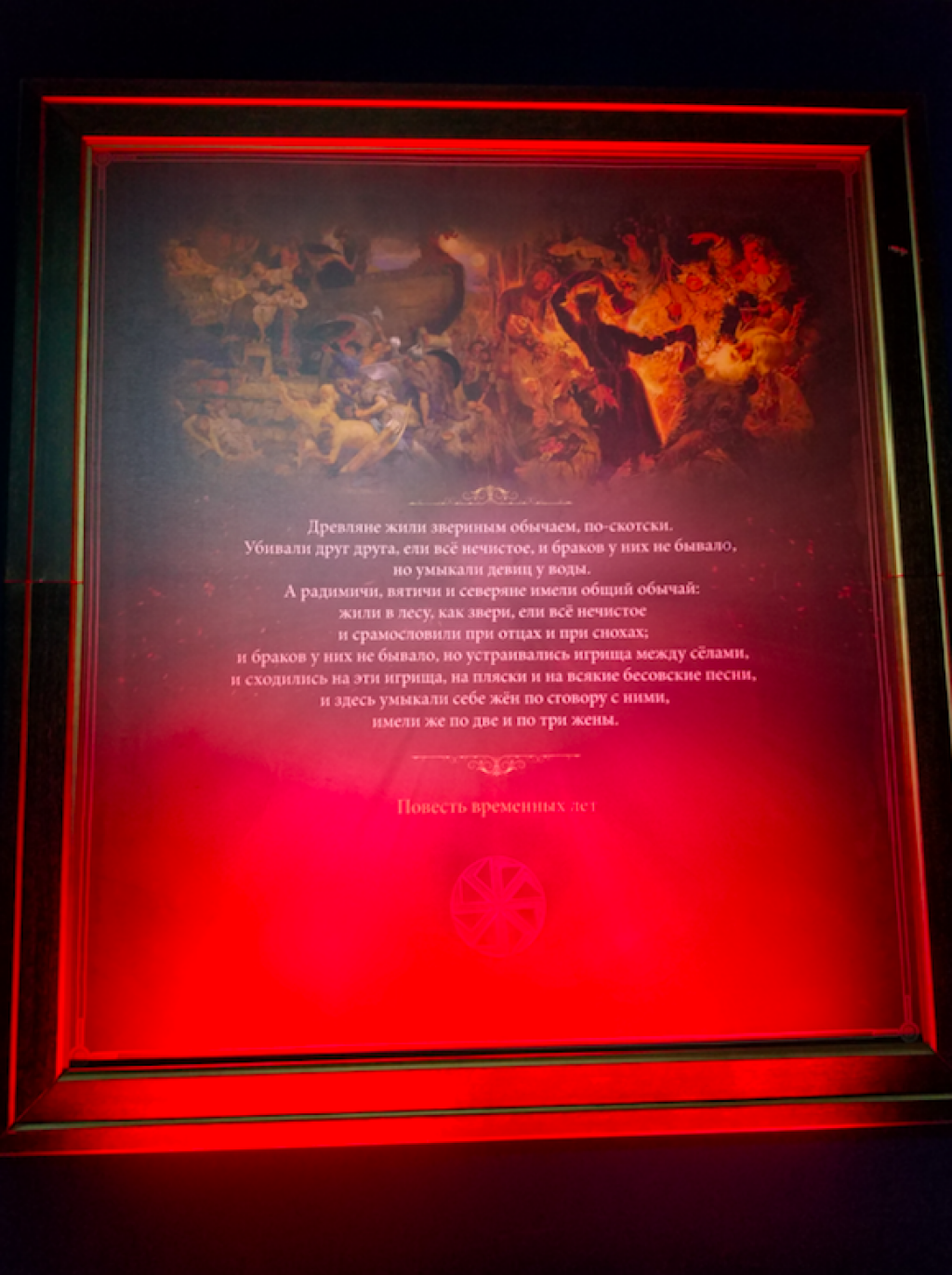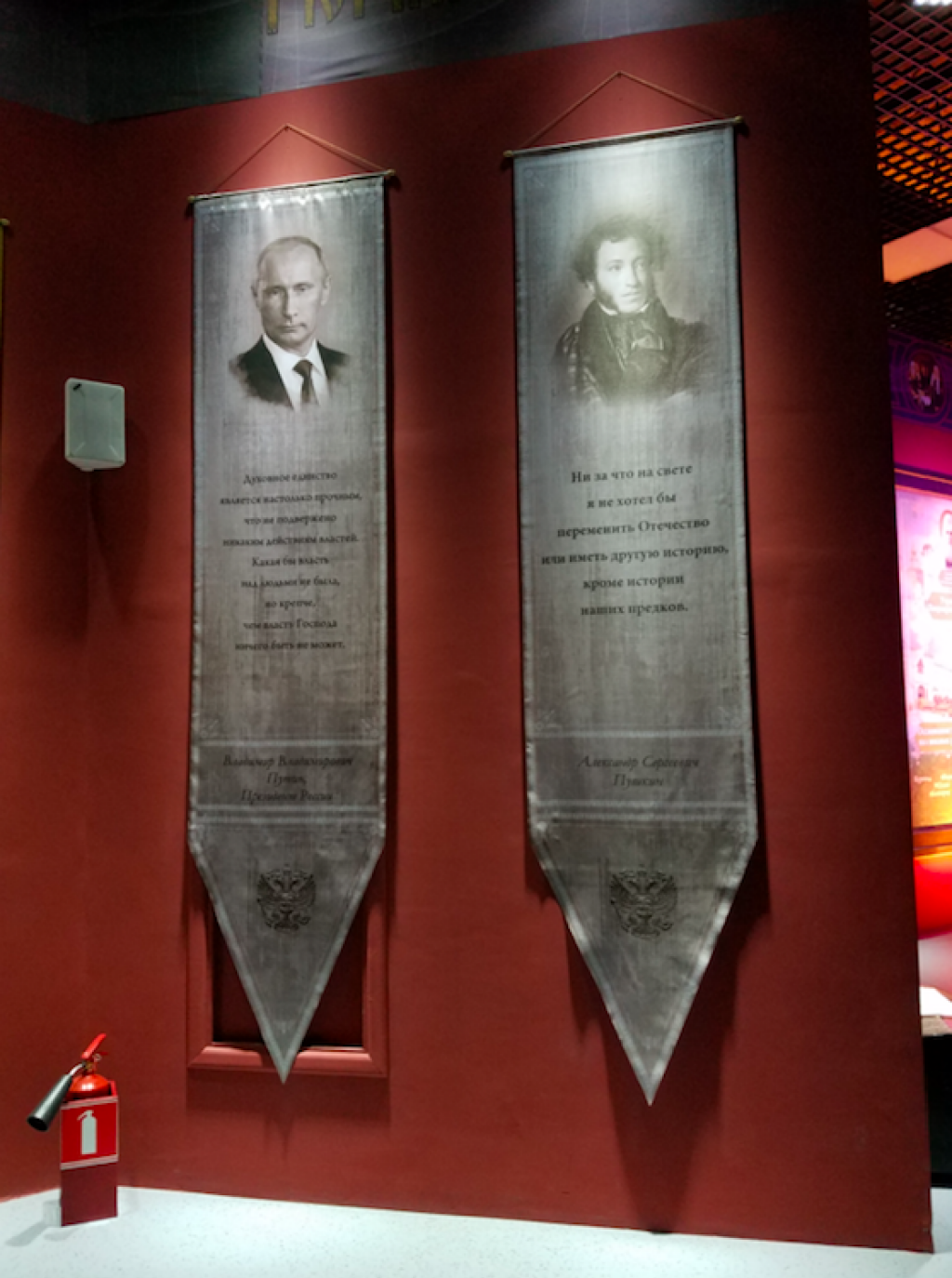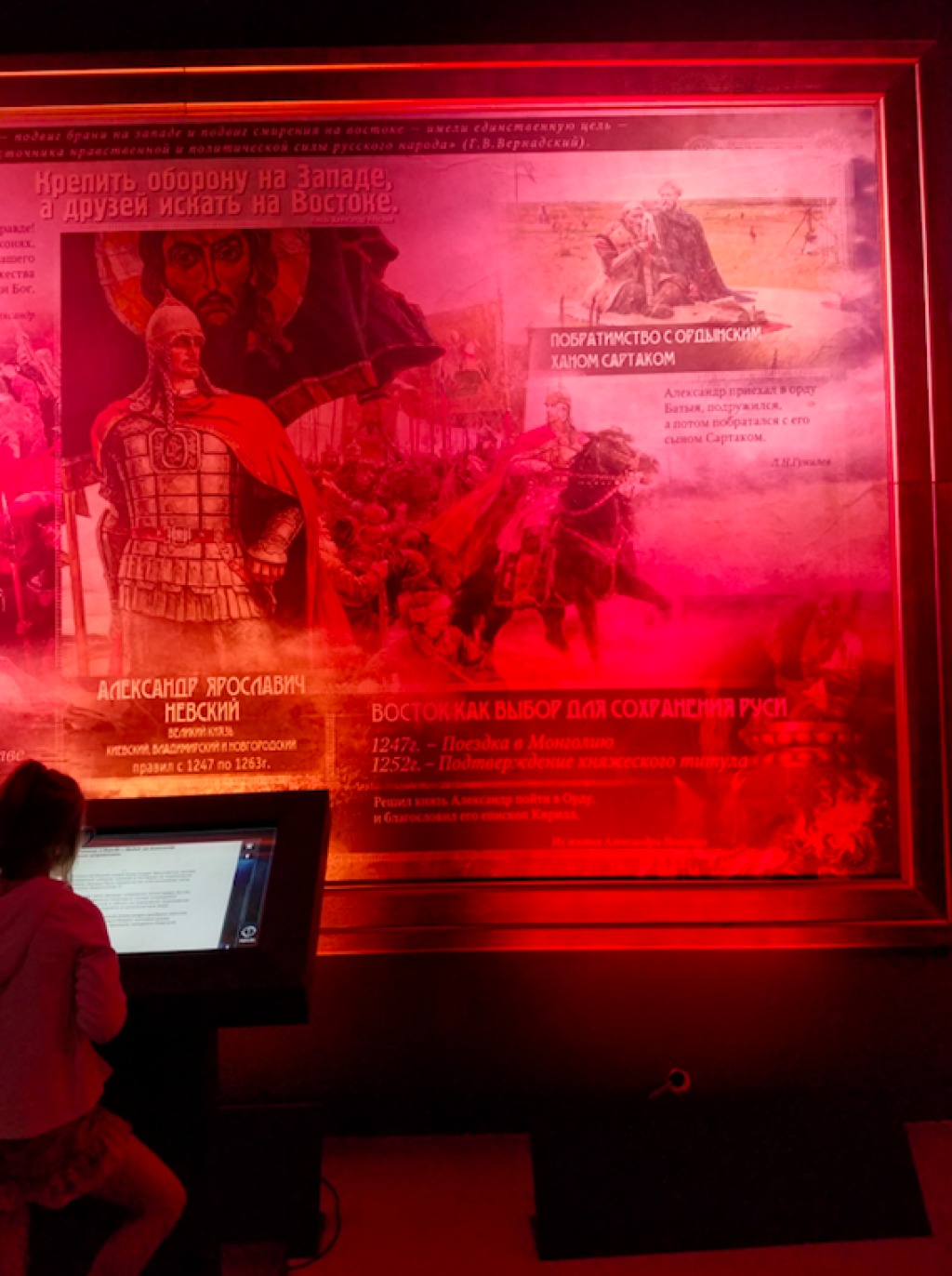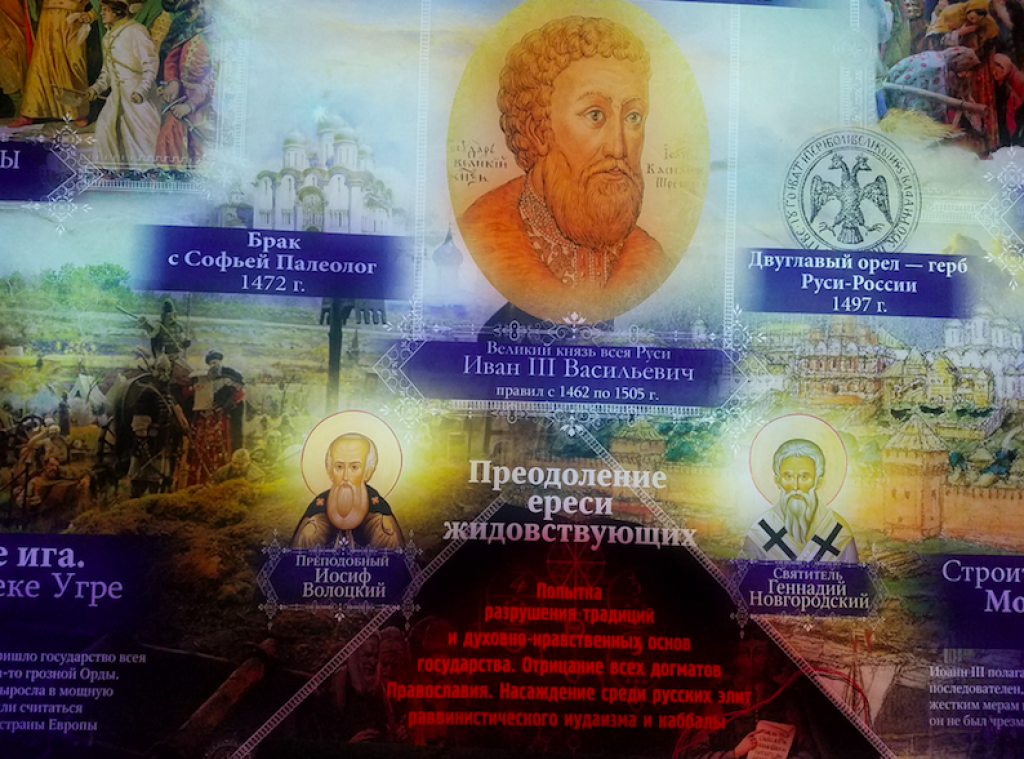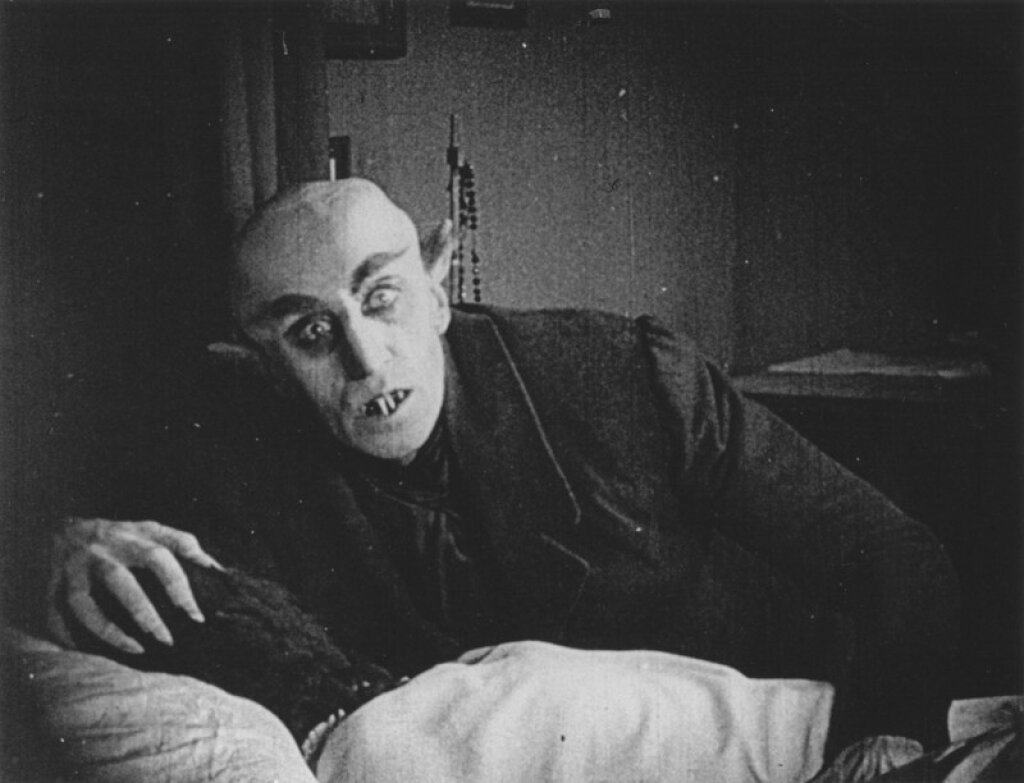Lindsay Ceballos is Assistant Professor of Russian and East European Studies at Lafayette College.
Moscow: at the newly renovated VDNKh (Exhibition of the Achievements of the National Economy), a multimedia, multi-city mega-exhibition called “Russia – my history” is open to visitors at Pavilion No. 57. Hosted at the location of the former “Disneyland” of the multi-ethnic Soviet Union, “Russia – my history” explores the formation of the new Russian national identity in what organizers are calling a “historical park.” It is a sobering look at what national history looks like in today’s Russia.
A living history textbook designed for all ages, the project first opened in 2013 at Moscow’s Manezh exhibition hall and has found its permanent home at VDNKh. In the fall of 2017, it opened in over a dozen cities across the country, including Makhachkala (Dagestan), Iuzhno-Sakhalinsk (Sakhalin), Nizhny Novgorod, and Novosibirsk. In interactive informational displays, specially produced short films, and digitized primary documents and scholarly syntheses of major historical events, “Russia – my history” is the first of its kind. And it has been extremely popular, attracting millions across Russia to its four exhibits. Depending on the city, visitors can explore the time of “The Riurikhids” (862-1598), or “The Romanovs (1613-1917),” “From Great Upheaval to Great Victory" (1914-1945), and, opening soon, “Russia – My History,” which encompasses the most recent Soviet and post-Soviet periods. At VDNKh, visitors can see the first two of these exhibits, which collectively span pre-history to 1917, the end of the Romanov dynasty.
Organizers of the project note that many experts, scholarly societies, universities, and archival institutions have contributed to the exhibits, but their ideological architect is Chairman of the Patriarchal Council on Culture, Episcope Egorevskii Tikhon (Shevkunov), who in May 2018 was promoted to Metropolitan of the Diocese of Pskov and Porkhov. The youngish and charismatic Metropolitan Tikhon is a close colleague and friend of President Vladimir Putin and has been rumored to be his personal confessor. On December 15, 2017, Metropolitan Tikhon and a panel of scholarly experts and educational leaders held a lengthy press conference to address criticisms from the Free Historical Society (Vol'noe istoricheskoe obshchestvo or VIO). One week earlier, the organization's website had run accusations of errors, misquotations, and manipulations of historical fact. The December 15 press conference failed to clear the air between the two parties: by December 22, the VIO posted a dissatisfied rebuttal, sharing more evidence of poor historiographical and scholarly rigor. One example is the exhibit's claim that the West perpetrated the first “information war in the European press” — whether we can speak of a “press” or “media” in the sixteenth century is doubtful — against Ivan IV ("the Terrible"); another, found in the Romanov exhibit, is the suggestion that the Decembrists were foreign agents, both disseminators and victims of “Masonic lies.”
" width="574" height="779" />
The Russian Orthodox and nationalist ideology of “Russia – my history” is at the core of these misrepresentations. History is massaged into a narrative that makes the present moment look like the culmination of a centuries-long struggle against foreign — specifically Western — influence.
Crossing through the turnstile into the first exhibit is like entering a cave. The absence of light reinforces the metaphorical darkness of the pre-historical period. A visitor encounters mostly red and blue light projections on the information panels and other screens, colors that acquire symbolic power and become the dominant scheme of the “The Riurikhids” (862-1598) exhibit. Moving through the maze-like configuration of rooms, larger informational screens convey broader summaries of key historical periods, from stable reigns to setbacks. Here and there are larger “film rooms” treating, to take one example, the role of miracles in the history of Kievan Rus’. The multimedia aspect of the exhibition seems poorly executed at times, but there are some interactive learning stations that succeed in drawing visitors in. For instance, special motion-sensing projectors pointed at blank, moveable pages of elephantine-sized tomes change text and image as visitors turn the pages. The centuries collapse. For a moment, for some, modern technology makes ancient and medieval Rus’ accessible to the contemporary viewer.
The Riurikhid exhibit begins with a tension in the origin of the Russian ethnic group: pagan hypersexuality and aggression generated the necessary raw power and patriarchal structure necessary to unify the collective, but real stability remained elusive prior to widespread conversion to Christianity.
Quoting from the Primary Chronicle, the panel on paganism underscores Slavic debauchery as a way of life. Heathens kept several wives and, if we believe the illustrator’s imaginative reconstruction, engaged in inter-species orgies. Mostly, however, and more seriously, this is the story of the strengthening of Kiev and later, Muscovy, in which it is hard to make out the multi-ethnic, multi-confessional empire that most general histories capture. Rather, we see a consolidated Christian state whose religious ideology taught peace and coexistence amidst the threat of aggression from neighbors, destabilizing internal heresies, or clan intrigue.
This exhibit is also supported with citations from the cultural, political, or scholarly elite, including Nikolai Berdiaev, D. S. Likhachev, Patriarch Kirill, Nikolai Karamzin, Alexander Pushkin, Fyodor Dostoevsky, Lev Gumilev, and Vladimir Putin, to name a handful. Their words appear on supporting panels hanging on either side of the main informational displays. The panels catch a visitor’s eye because they, unlike most of the information screens throughout the exhibit, are not enhanced by dramatic lighting or digital projection. In shape and design, they call to mind political banners carried aloft in demonstrations, or the color guard of a royal procession. They hang as authoritative credos alongside larger screens detailing particular events in the history of Rus’, the timeless written words of cultural and political elites, whose voices join together in an undated, de-contextualized, and anachronistic polyphony. Putin, for instance, is quoted alongside Pushkin at the very end of the Riurikh exhibit.
Divorced from their contexts and histories, these voices and the ideas they articulate are fully malleable, appropriate to any setting. This tendency to separate an author’s text from its source manifests the pervasive violation of diachronic time throughout the exhibit (as a related issue, many quotations from Dostoevsky are mangled versions of his original texts, either from the Pushkin speech, or his Diary of a Writer). It seems unimportant to specify when, or even precisely what, these writers, scholars, historians, politicians, and religious leaders said; all that matters is that they once articulated approximately the sentiments ascribed to them.
Though the quotation panels feature the musings of recurring thinkers and writers, two figures dominate the ideological landscape of “Russia – my history,” helping to bridge the transition from the Riurikh to the Romanov exhibits. The first is the reactionary Russian philosopher Ivan Ilyin, recently the subject of an article by historian Timothy Snyder. Ilyin’s words appear in both exhibits, but are never attributed to any particular work. His views on virtually every aspect of society – politics, religion, and culture – are present more than any other thinker's.
The second ideological touchstone is Lev Gumilev, the Eurasianist thinker and controversial scholar whose theories about the “super-ethnos” have since the early 1990s gained increasing traction in Russia. Here, what prevails is Gumilev’s notion that Russia thrived under Mongol rule, and in so doing protected itself against the Catholic West. Alexander Nevsky is presented as a genius of international affairs: one quotation panel displays current Foreign Minister Sergei Lavrov’s declaration that “Alexander Nevsky laid the foundations of a multi-vector Russian diplomacy.” However in line with Gumilev’s conclusions the exhibit may be, the digital screen that chronicles his accomplishments is saturated with red light, a color that on previous information screens suggested turmoil or some threat.
Contrasting with the many cerulean blue or bright green digital screens dedicated to Christian conversion, economic prosperity, or the acquisition of new territory, this red panel creates a stark picture of heroes and villains of Russian history. Elsewhere in the Riurikhid section, red appears on digital screens detailing the pagan excesses of pre-Christian Slavs. The color also accompanies panels on the destabilizing effects of heresies supposedly perpetrated by Jews, which the VIO specifically noted for their anti-Semitism.
This use of color presumably helps children understand which historical episodes to celebrate and which to fear or loathe. Indeed, light is one of the dominant devices of the exhibitions’ generally stodgy and aesthetically unappealing design: as visitors move from the Riurikh dynasty to the Romanovs, the rooms get brighter and brighter as the Russian Empire expands and enters the post-Petrine era.
If Gumilev's historical vision animates the exhibits' sense of the past, it is Ilyin’s right-wing Orthodox Christian nationalism that lends that past prophetic gravitas and offers a formula for the future. His words, as quoted by the exhibits' curators, often acquire a programmatic quality. For instance, in the section on Sergii Radonezhskii’s spiritual influence and the miraculous outcome in the 1380 Battle of Kulikovo, one banner proclaims: “To the West we are not pupils, neither are we teachers. To God we are pupils and our own teachers.” Another Ilyin quotation, located in the same room, reads: “The territorial size of Russia demands a strong power,” words that are repeated toward the beginning of the Romanov exhibit. This time, however, they are placed not near Dostoevsky’s nationalist musings from A Writer's Diary, but next to a quote from the author's best-known rival — Ivan Turgenev.
Ilyin thus becomes the reconciler of seemingly irreconcilable differences, his words bridging the gap between the most famous representatives of the Westernizer and Slavophile movements. The Turgenev quote reads,
“Russia can get by without any of us, but not one of us can get along without her. Woe to the person who thinks so and double-woe to the person who really does get by without her.”
The quotation derives from Turgenev's first novel, Rudin (1856). Its source is Mikhail Lezhnev, a character whose views, personality, and lifestyle are opposed to those of Rudin, Turgenev's idealistic, brilliant, and Western-inclined hero. To conflate an author's views with his or her fictional characters in this manner is at best careless, and at worst deliberately dishonest. Ilyin’s presence near Dostoevsky in one exhibit and right next to Turgenev in another is similarly ideologically incoherent, suggesting an accord of historically incompatible perspectives. With Ilyin framing the "dialogue," itself composed of deceptive, poorly attributed quotations, Turgenev becomes a Slavophile. In the new VDNKh exhibition, Russia becomes whatever its organizers want it to be.


